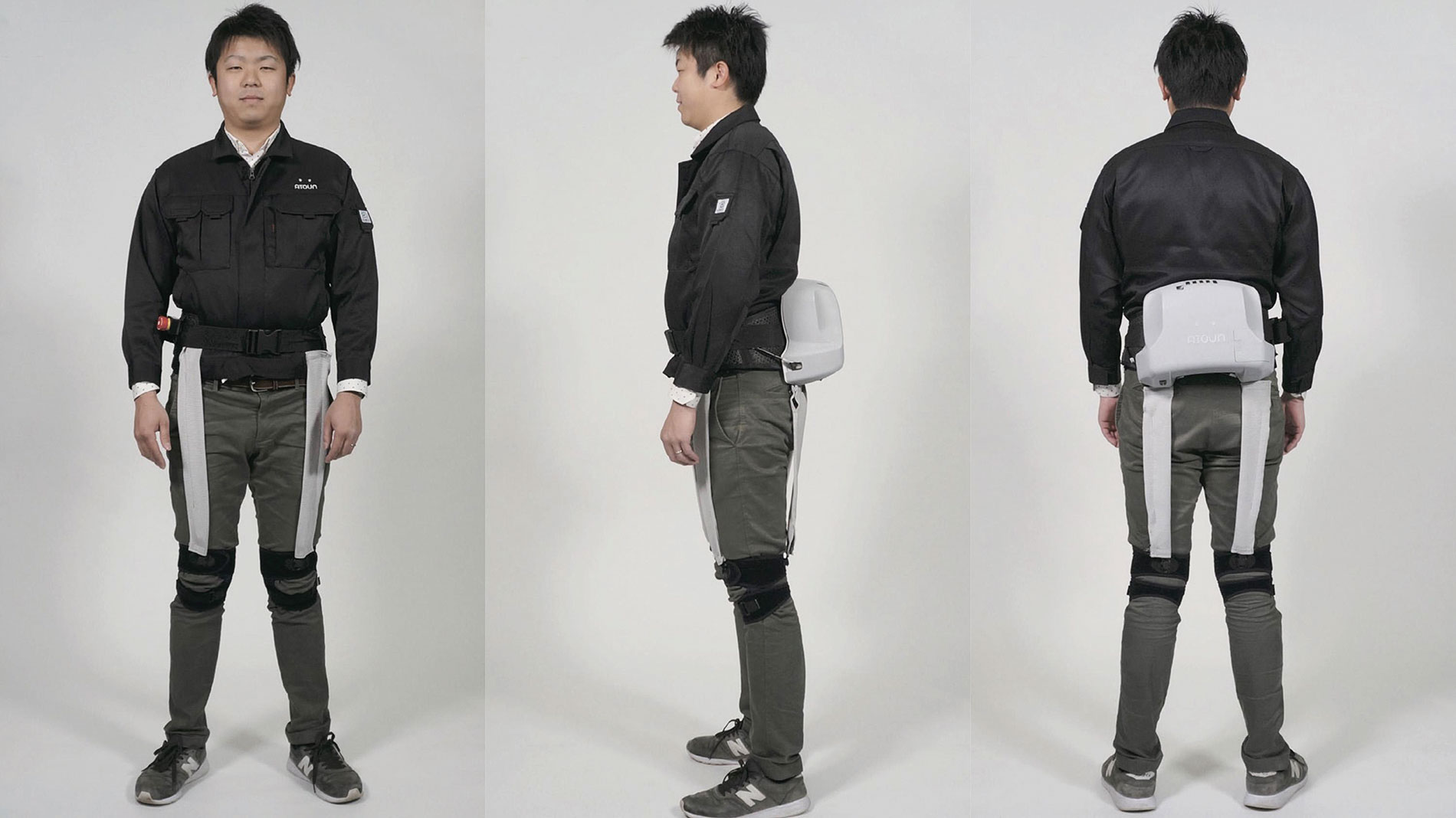A wearable robot is a machine that aids telepresence which is a more refined form of interactive remote control. It is a wearable device that increases the motion and/or physical abilities of a person. It helps a human operator to control a humanoid robot, an android. They are also called bionic robots. These supplement human capability.

Exoskeletons provide patients with the balance and strength required to walk or stand. But if the patient has issues not only with his joints or bones but with the muscles and nerves, the need for wearable robotics is felt.
How do wearable robots function?
Exoskeletons come with rigid parts, batteries, and motors. But if the problem lies in the muscles and nerves, these will hardly be of any help. To solve this problem, robots were developed for patients to put on as a flexible light suit having a smart control system and lightweight parts without the requirement of tools.
A wearable robot is designed in the function and shape of a human body. The control unit is a suit that the operator wears. This suit can be very simple or again very complex. It might be just a headset and gloves or very complex like a medieval suit of armor with electronic devices wired to it. This enables the wearer to put the robotic devices, i.e. the extensions of the suit, through human-like movements. The robot imparts sounds, sights and tactile effects sensed by him to the wearer with the help of transducers. The robot may be much more powerful and speedy than the human controlling it.

The pieces of hardware of the wearable robot interface can be programmed in many ways. The devices or sensors take in behavioral, verbal or other inputs to facilitate specific kinds of motions. It involves the meeting of sophisticated new hardware, wireless technologies and big data.
How are wearable robots used?
Wearable robots are being used in the military. These have also been used in exploratory scientific missions. These can work in extreme pressure or temperature conditions, disarming mines, work as remotely controlled tanks, infantry, work in areas with extreme levels of ionizing radiation, planting and setting bombs, as SCUBA divers and much more.
The IEEE/RAS Technical Committee (TC) has given a platform for researchers and practitioners to exchange resources and information related to this field of wearable robots so that human movement abilities in several segments can be supplemented. These segments include the increase of workforce to motion assistance and movement rehabilitation for elderly, disabled and weak people and even for healthy ones.
This is a hugely interdisciplinary field including safety, lightweight efficient actuation, human-machine interaction, wearable sensors, material science, ergonomics, control, autonomy, soft robotics, and textile and apparel design. And keeping this in mind, Technical Committee (TC) has sought to gather researchers from various backgrounds within the RAS community for discussion, research, and learning.
There will be discussions on the state of the art, limiting and challenging factors for the development of sustainable wearable robots for augmentation, assistance, and rehabilitation of human movements in real-life conditions. It will focus on issues concerned with novel kinematics and actuation solutions for these robots and also the increasing challenges of using novel human-robot multimodal interaction paradigms. Also, there will be a treatment of issues related to physical/cognitive human-robot interactions.
Focus is being concentrated on promoting complete wearability, adaptability, reliability, portability, and energy harvesting of the device and also the safety of the user. Also, the platform will be provided for the promotion of international initiatives, industrial and/or innovative solutions for the aid of frail people. This will give an extraordinary opportunity to share information and technology transfer amongst experts from various fields like social, industrials, medical and caregivers.
Wearable robots are used for rehab and post-surgery purposes. This excellent technology is put to medical use where disabled or paralyzed individuals can benefit largely from them.
Wearable robots find their application in industrial and commercial fields too. It enhances and assists performance by performing better or longer. You may also complete a task you could do earlier but cannot do now with the help of these robots. It exceeds normal capacities and capabilities. It enhances human performances like physical strength, sensory, endurance and cognitive.
These robots help patients strengthen and regain movement. They improve or replace a damaged body function or train people so that they can move by themselves again. These robots lighten therapeutic loads. They enable people to walk or stand up after paraplegia or strokes.
Wearable robots are also used in the field of communications and safety. These can be deployed in telepresence or remote collaboration. The wearer’s movements are translated remotely.
The whole effort is relevant to everyday life and its improvement.

